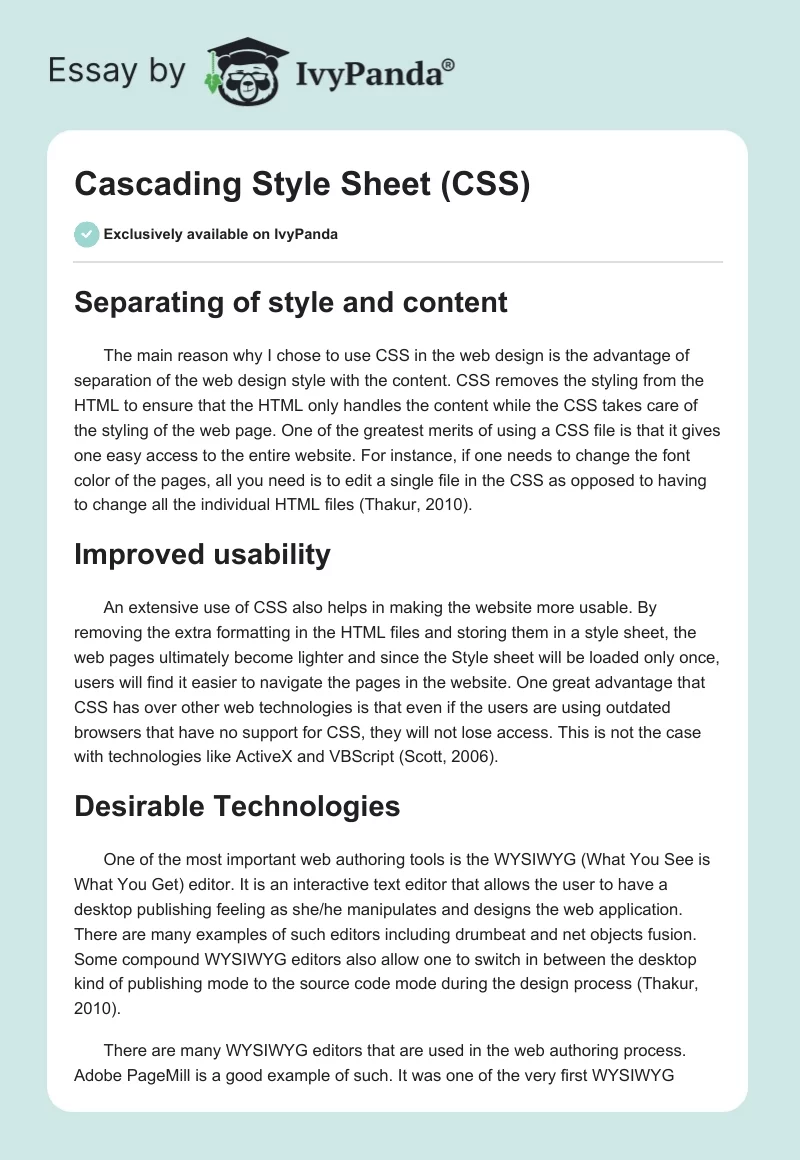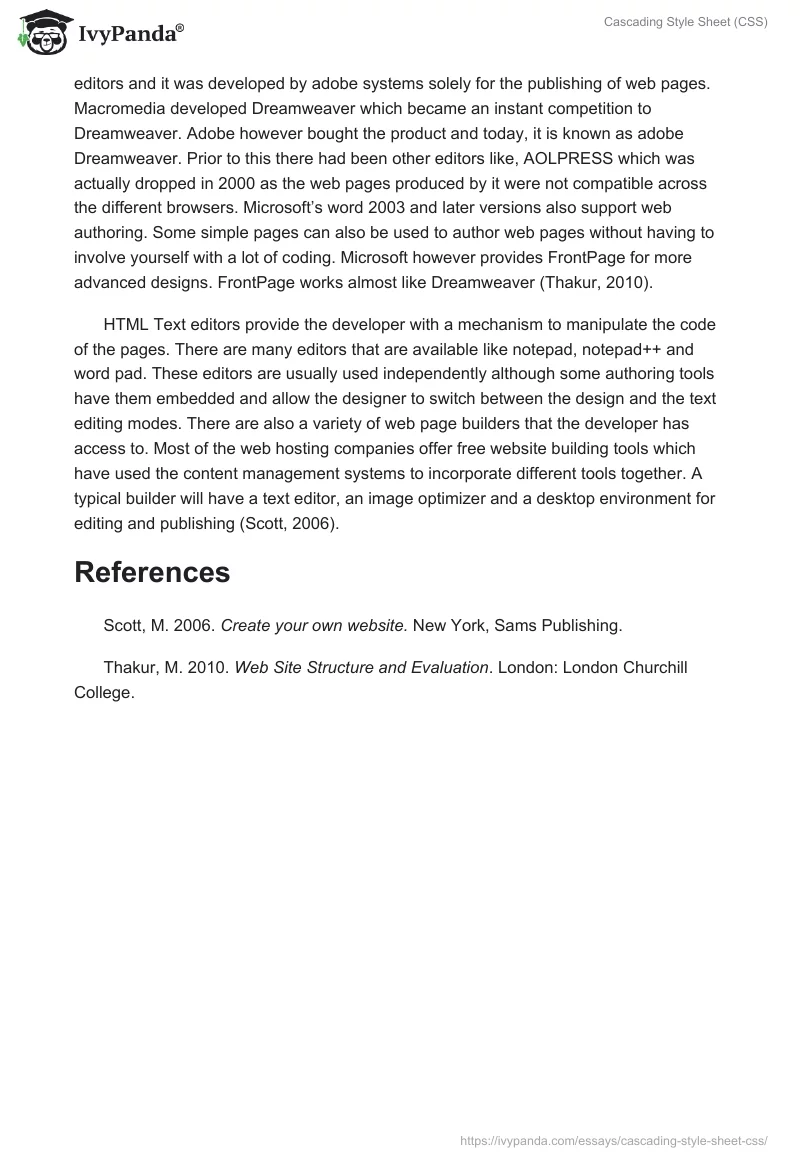Separating of style and content
The main reason why I chose to use CSS in the web design is the advantage of separation of the web design style with the content. CSS removes the styling from the HTML to ensure that the HTML only handles the content while the CSS takes care of the styling of the web page. One of the greatest merits of using a CSS file is that it gives one easy access to the entire website. For instance, if one needs to change the font color of the pages, all you need is to edit a single file in the CSS as opposed to having to change all the individual HTML files (Thakur, 2010).
Improved usability
An extensive use of CSS also helps in making the website more usable. By removing the extra formatting in the HTML files and storing them in a style sheet, the web pages ultimately become lighter and since the Style sheet will be loaded only once, users will find it easier to navigate the pages in the website. One great advantage that CSS has over other web technologies is that even if the users are using outdated browsers that have no support for CSS, they will not lose access. This is not the case with technologies like ActiveX and VBScript (Scott, 2006).
Desirable Technologies
One of the most important web authoring tools is the WYSIWYG (What You See is What You Get) editor. It is an interactive text editor that allows the user to have a desktop publishing feeling as she/he manipulates and designs the web application. There are many examples of such editors including drumbeat and net objects fusion. Some compound WYSIWYG editors also allow one to switch in between the desktop kind of publishing mode to the source code mode during the design process (Thakur, 2010).
There are many WYSIWYG editors that are used in the web authoring process. Adobe PageMill is a good example of such. It was one of the very first WYSIWYG editors and it was developed by adobe systems solely for the publishing of web pages. Macromedia developed Dreamweaver which became an instant competition to Dreamweaver. Adobe however bought the product and today, it is known as adobe Dreamweaver. Prior to this there had been other editors like, AOLPRESS which was actually dropped in 2000 as the web pages produced by it were not compatible across the different browsers. Microsoft’s word 2003 and later versions also support web authoring. Some simple pages can also be used to author web pages without having to involve yourself with a lot of coding. Microsoft however provides FrontPage for more advanced designs. FrontPage works almost like Dreamweaver (Thakur, 2010).
HTML Text editors provide the developer with a mechanism to manipulate the code of the pages. There are many editors that are available like notepad, notepad++ and word pad. These editors are usually used independently although some authoring tools have them embedded and allow the designer to switch between the design and the text editing modes. There are also a variety of web page builders that the developer has access to. Most of the web hosting companies offer free website building tools which have used the content management systems to incorporate different tools together. A typical builder will have a text editor, an image optimizer and a desktop environment for editing and publishing (Scott, 2006).
References
Scott, M. 2006. Create your own website. New York, Sams Publishing.
Thakur, M. 2010. Web Site Structure and Evaluation. London: London Churchill College.


